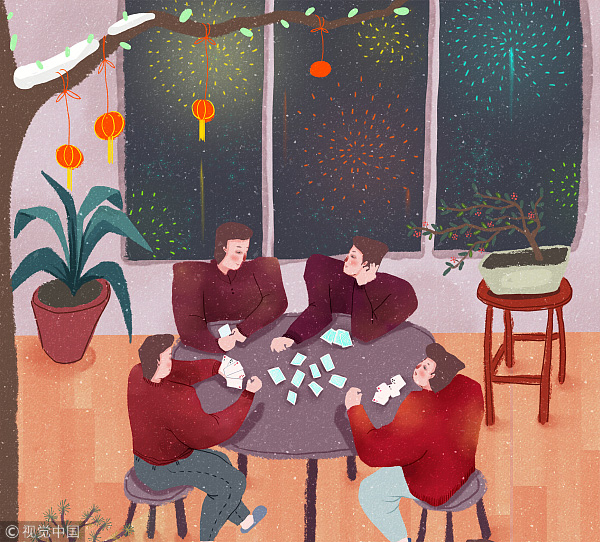
Culture China
07:57, 02-Feb-2019
The trend and change of China's Spring Festival Gala
Updated
16:59, 02-Feb-2019
By Ye Qing

The Chinese lunar New Year Eve falls on February 4 this year. As one of the most-watched programs in China, the China Central Television (CCTV) Spring Festival Gala has been an integral part of the Chinese New Year rituals. From the television era to the digital age, people’s expectations always run high for the 36-year-old event.
The Spring Festival Gala can be traced back to the one in 1956, a documentary about the Spring Festival, and recorded by the Central Studio of News Reels Production and distributed nationwide.

VCG Photo
VCG Photo
The documentary almost gathered all the elites of China's cultural and art circles at that time, including Xie Jin, a famous movie director, as well as Mei Lanfang, Hou Baolin, Lao She, Ba Jin and other literary and art giants, in addition to Qian Xuesen, Rong Yiren, and other famous personages, who appeared in the documentary among the audience.
During the Spring Festival of 1957, China National Radio held a series of music and opera Spring Festival Gala on the radio channel.
Subsequently, CCTV launched the Spring Festival Gala in 1979 New Year's Eve with the nature of today's Spring Festival Gala, formally started the first live show in 1983.
In the following years, in different media forms, models and types of the Spring Festival Gala have kept on exploration and innovation, looking for artistic expression forms closer to the feelings and experience of Chinese people at home and abroad. However, not every exploration and innovation has been that successful.

VCG Photo
VCG Photo
In 1985, to expand the artistic performance space of the Spring Festival Gala and increase the audience on site as much as possible, the CCTV Spring Festival Gala moved the location of the gala to Beijing Workers' Gymnasium. Due to the lack of technical conditions and live broadcasting experience at that time, the performance of that year's party was not satisfied by the audience and the crew of the gala party.
Since 1986, the Spring Festival Gala has gradually formed a relatively stable pattern and type, and the form of programs we have today is inherited from that time.
To further strengthen the interaction with the majority of the audience, CCTV began to hold the selection of the most popular Spring Festival Gala program from 1990, which has also become a strong link between the Gala and the majority of the audience.

VCG Photo
VCG Photo
From that time on, the annual Spring Festival Gala has no longer been an ordinary party but became an indispensable "New Year's Eve dinner" for Chinese citizens and an important part of modern Spring Festival customs.
Since 2005, the Spring Festival Gala has also opened the door to ordinary people, Through "Spring Festival Gala Express," a selection program that allows ordinary people to participate in the Gala, and other open channels, attracting many folk artists across the country through the stage.
After decades of development, China's Spring Festival Gala has gone through several stages, such as artistic performance, cultural tracking and folk custom communication. Although the content of the program is more precious, the form of the program is increasingly diverse, and the audience's requirements for the Spring Festival Gala are higher.
Before and after the Spring Festival Gala every year, all kinds of discussions about the program will become a trending cultural event.
Along with the diversification of the audience's aesthetic demands, the Gala has appeared in recent years to serve specific groups of people, such as the "Spring Festival Gala of the Opera," whose audience share similar taste, to make it more targeted.
The objective of these galas has always been entertaining-a traditional festival, and an event for deepening the general culture recognition.
Spring Festival is the biggest holiday in the Chinese world. Although people celebrate it in different ways and have their judgments on the Spring Festival Gala, watching it on the New Year's Eve has become part of the celebrations for Chinese people around the world.

SITEMAP
Copyright © 2018 CGTN. Beijing ICP prepared NO.16065310-3
Copyright © 2018 CGTN. Beijing ICP prepared NO.16065310-3